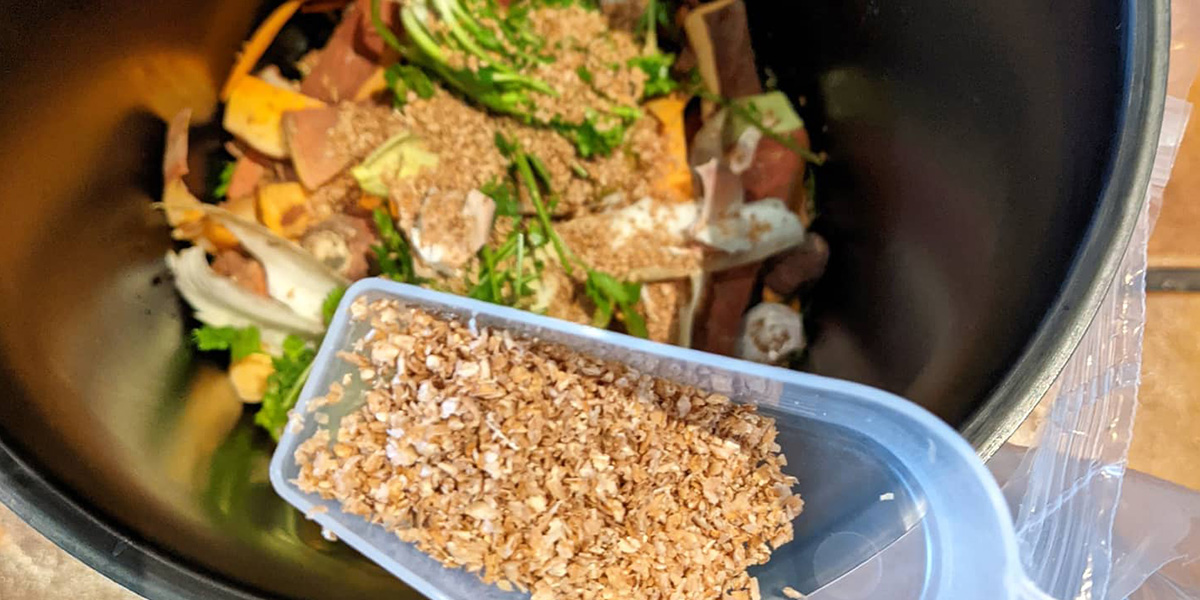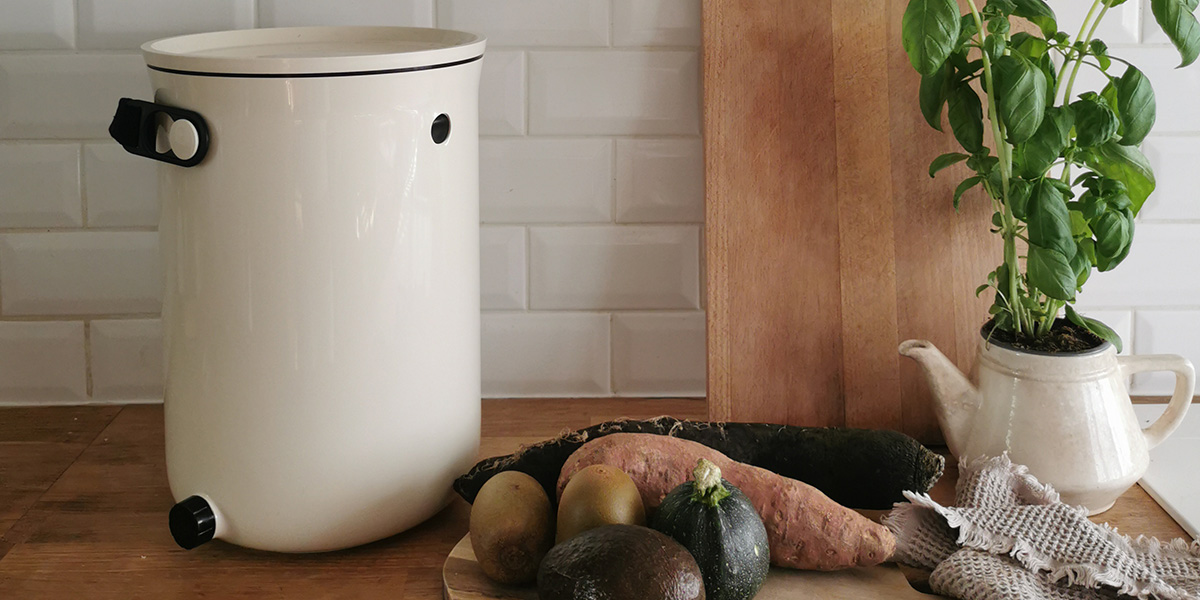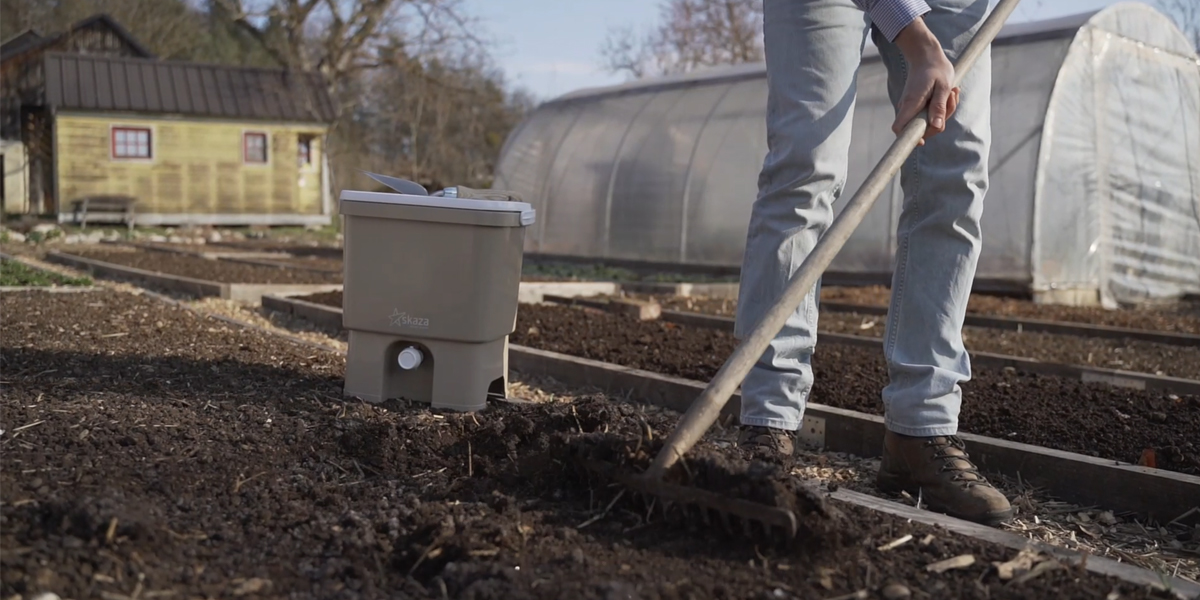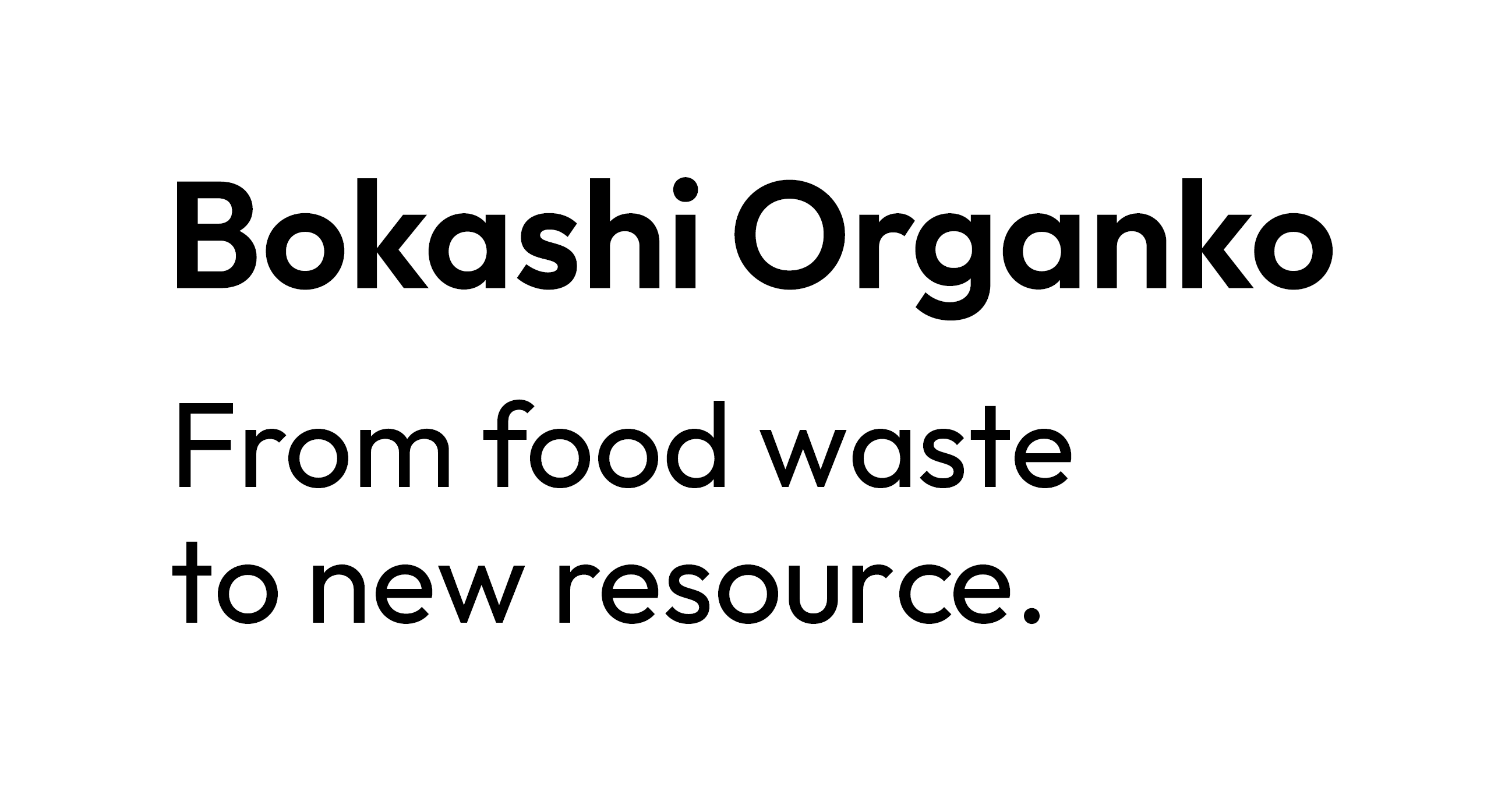In this article, bokashi anaerobic fermentation (composting) will be presented. This is a (beneficial) anaerobic fermentation process that takes place without oxygen. Microorganisms present in the bokashi bran multiply in contact with organic waste, which ferments into organic soil nutrient and liquid fertilizer – fermentation liquid. Bokashi is a Japanese term for fermented organic matter.
To clarify the concepts - is bokashi composting or bokashi fermentation?
Technically, bokashi is fermentation. But because in this context it is used to convert organic waste into compost or plant nutrients, the term bokashi composting is used for easier understanding.

How does bokashi composting work?
First about the benefits. We can ferment all organic waste, including dairy products, orange peels and bananas in a special, airtight bucket that we keep in the kitchen and is thus very convenient. The bucket must have only a drainage bottom so that water does not accumulate on the bottom, which would cause putrefaction.
We regularly sprinkle organic waste with brown bran, enriched with effective microorganisms - Bokashi Bran. The material is loaded into the bucket in layers - organic waste, bran, organic waste, bran - for good contact of waste and bran, until the bucket is full. We prefer to add a little more bran than too little. It’s kind of a golden rule not to skimp on the bran, at least not at the beginning, when we start filling Bokashi Organko. After each filling, the kitchen waste must be compressed well to remove the air. During the use and the filling of the bucket, the fermentation liquid that accumulates in the lower part of the bottom is also used.
When the bucket is full, we seal it and store it for a maximum of 14 to 21 days at ambient temperature, for example in a garage, boiler room etc. During this time, the beneficial microorganisms in the bucket are still fully active and the fermentation liquid still accumulates at the bottom, therefore it is regularly drained and used. All this time the organic material is fermenting and so we get, as we like to say, pre-prepared organic nutrient, which is not yet compost!

What is happening in a closed Bokashi Organko bucket?
Bokashi bran is a dry organic matter "infected" with beneficial microorganisms that thrive in low-pH anaerobic environments. When the bran with microorganisms comes into contact with organic waste, the microorganisms multiply and convert the organic matter (from more complex to simpler forms).
Proper bokashi anaerobic fermentation of the kitchen waste does not emit a stench. However, if this occurs, it is an obvious sign that something is wrong, that the process has turned into anaerobic putrefaction. Often the reason for this is too wet content, which causes rotting and non-fermenting of kitchen waste, or not enough bokashi bran has been added.
What to do with fermented content?
It can be fully composted on a compost pile, or added to the garden as the bottom layer of mulch, or dug into the soil. Since we do not dig our garden, we prefer to fully compost the content or add it as mulch.
This adds beneficial microorganisms to the compost pile. We should not forget that we have mainly multiplied anaerobic microorganisms, so we open the compost pile, prepare a pit and shake the processed content a little deeper inside the compost pile, or at least cover the top with straw. Beneficial microorganisms will multiply in the composter and further help to process all the organic matter. Kitchen waste is thus composted quickly and accelerates the composting of other garden waste (grass clippings, larger garden waste, straw, leaves...).

Summary
Bokashi is one of the most convenient composting systems, as we do it right under the kitchen counter. Bokashi Organko is a ready-made bokashi composting kit. Composting (or fermenting, to be technically correct) waste in this way is a wonderful start to working with microorganisms. Microscopically small gardener’s assistants are present in all aspects of working with the garden and more broadly with nature. A deeper understanding of their action certainly brings great success.
(Source: Robi Špiler & Tjaša Štruc, Vrt obilja)


